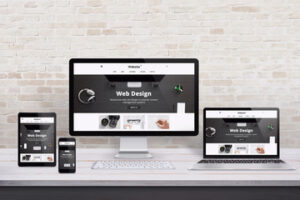Web design is the art of creating a website that has a look and feels that appeals to the end user. The design is important, not only for its aesthetic value but for the way it helps a visitor interact with the site. There are several styles of web design, including User interface, Mobile-first, Responsive, and Fluid layouts.

User interface design in web design refers to the informational and navigational components that users interact with on a website. It includes the text box, buttons, and toggles that are used to navigate, input, and perform various tasks. Creating an intuitive user interface that allows people to accomplish specific goals with ease is a key element to successful websites.
There are several factors that affect the comfort of an interface, including design, messaging, and accessibility. These factors can be decomposed into sub-factors, but the most important ones are:
To achieve the best results, a UI designer must incorporate basic principles of visual design. They should also stay on top of industry trends. In addition, UI designers should communicate with other designers and web developers to ensure that their interface is intuitive and effective.
Choosing icons and typography is a key element of UI design. Good UIs are colorblind-friendly and should be translatable into different languages.
Another important factor is to be consistent with other elements of the website or application. A good user interface will allow the average user to complete a task with ease and will enable highly skilled users to customize the interaction mechanisms. This consistency will also allow users to recognize usage patterns.
The visual layout of an interface should be based on a metaphor that is relevant to the user’s environment. Ideally, the design should be concise, transparent, and unobtrusive. However, complicated designs can confuse and cloud the underlying purpose of the interface.
Finally, a good UI designer should be flexible and adaptable. As the market becomes more and more competitive, companies must continue to update their websites to keep up with the competition.
Creating a navigation menu is a necessary part of web design. Not only does it help users move between pages, but it also helps improve the overall user experience. There are several different kinds of navigation menus, but whichever kind you choose, you’ll want to make sure that it’s easy for visitors to find what they’re looking for.
The hamburger menu is one of the most popular types of navigation bars. It’s a three-horizontal line icon that appears when a user hovers over it. A click on the hamburger icon takes them to a menu with expanded options.
Another type of menu is the hidden menu. Popularized by iOS developers, these navigation drawers provide no obstruction for the page and offer easy customization to match the layout.
Using Google Analytics, you can tell which navigation items are most popular. This information can help you determine the best placement for your navigation.
You can also make use of the Heatmap feature in your analytics tool to see what your visitors are most likely to click. By using data to guide your navigation, you can avoid that “I think this will work” moment.
Another important aspect of navigation is the back button. This is particularly useful when you’re dealing with mobile devices. Jakob Nielsen coined the term “lifeline of the web user” to describe the back button’s role in navigation.
Before putting a navigation menu on your website, you should determine your goals. This way, you can ensure that you’re aligning your navigation with your goal.
Finally, check the quality of your HTML code. If the navigation bar is poorly written, it can frustrate your visitors.